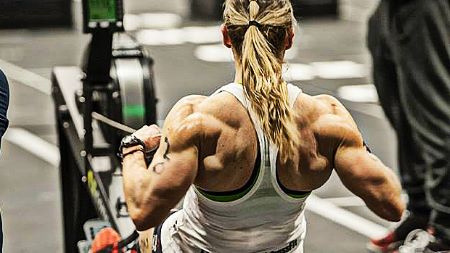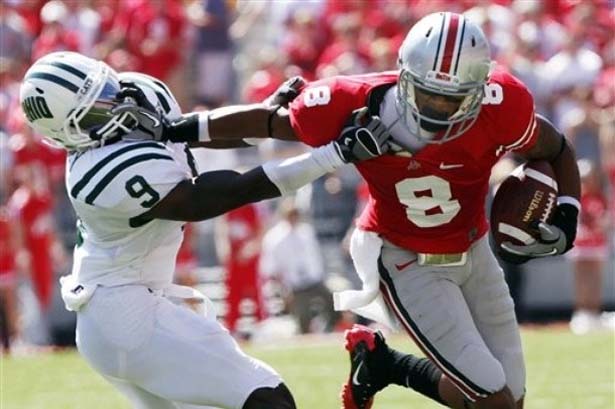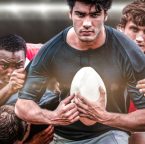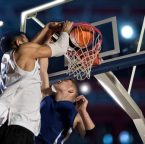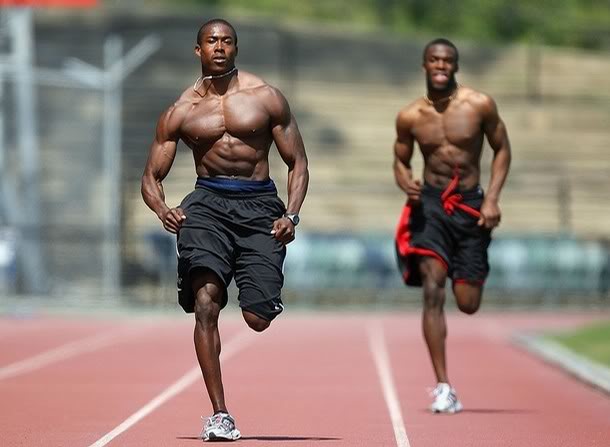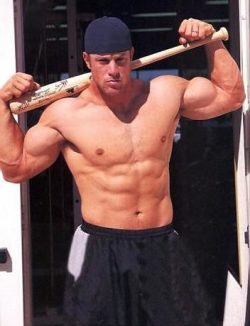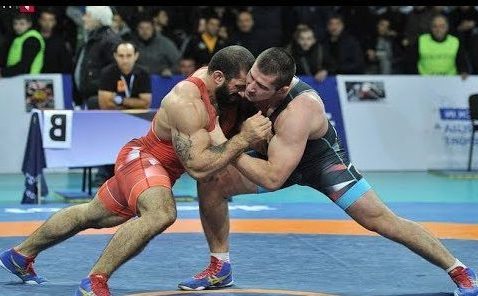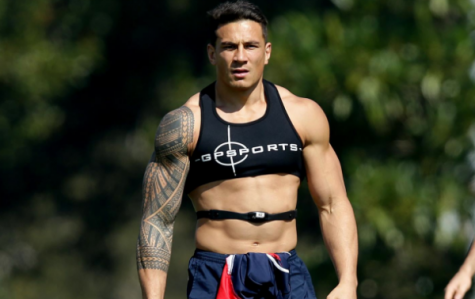Rowing is a demanding sport that requires strength, power, endurance, and technique.
It’s a test of willpower, discipline and determination.
But to truly dominate on the water, you need to have a well-rounded fitness routine that targets the specific muscles used in rowing.
In this article, we will dive deep into the best exercises for rowers. These exercises will help to improve rowing power and reduce the risk of injury.
On top of that, we have strength training workouts for rowers and erg workouts that will have you rowing faster than ever.
Let’s get started!
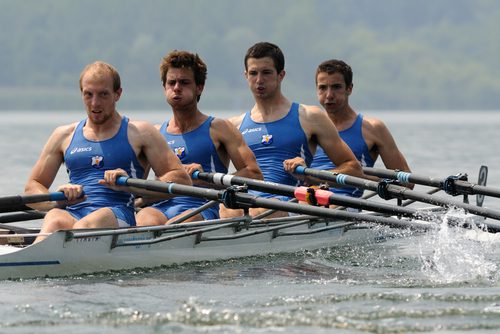
Best Exercises for Rowers
If you want to dominate on the water, skip the CrossFit workouts and focus on these strength training exercises.
#1 Leg Press
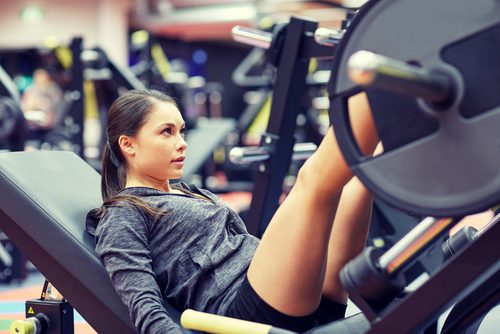
From an outsider’s perspective, you may think rowing is mostly upper body. It’s actually more of a lower-body sport, though.
You will be using your legs a lot, whether you are in the drive phase or the recovery phase.
The leg press is a great exercise to help with the drive phase since the leg press comes pretty close to mimicking the same movement you do in the drive phase.
Muscles Worked
- Quads
- Glutes
- Hamstrings
How to perform the leg press:
- Sit in the leg press machine with your back against the seat and your feet flat on the platform.
- Adjust the seat and the footplate so that your knees are bent at a 90-degree angle when your feet are flat on the platform.
- Place your hands on the handles or grips next to the seat.
- Slowly press the platform away from your body by straightening your legs, keeping your back against the seat and your feet flat on the platform.
- Pause at the top of the movement, then slowly lower the platform back towards your body by bending your knees and returning to the starting position.
#2 Bulgarian Split Squats
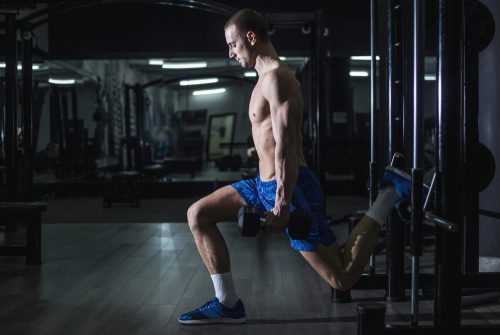
Bulgarian split squats are another great exercise when training for rowing to help with the drive phase and all other athletes in general really.
This exercise is also known as the foot-elevated split squat. It works the quads, glutes, and hamstrings along with the core for stability.
The Bulgarian split squat can be performed with or without weight to increase difficulty.
Muscles worked:
- Quads
- Glutes
- Hamstrings
- Core
How to Perform the Bulgarian Split Squat:
- Start by placing one foot behind you on a bench or other elevated surface. Don’t lose your balance or it could be embarrassing.
- Stand tall with the other foot out in front of you, with a slight bend in the knee. Your feet should be about hip-width apart.
- Hold a pair of dumbbells, or keep your hands on your hips if performing the exercise without weight.
- Slowly lower your body by flexing at the knee and hip of the front leg while keeping your back straight and your chest up. Make sure your front knee is directly above your ankle and not moving forward.
- Continue to lower your body until your thigh is parallel to the ground or as low as you can comfortably go. Keep your weight balanced on the heel of your front foot.
- Push through the heel of your front foot to return to the starting position, exhaling as you do so.
- Complete the desired number of repetitions, then switch legs and repeat the exercise with the other leg.
#3 Romanian Deadlift
The Romanian deadlift is a great exercise for everyone, rowers included.
Rowing athletes, as well as many other athletes, benefit from incorporating the RDL (Romanian Deadlift) into their training because it strengthens the posterior chain, which is the muscle group responsible for driving the power in rowing.
The RDL particularly works the hamstrings, which are essential for the recovery phase. Without strong hamstrings your rowing career won’t reach its full potential, and you don’t want that.
Muscles worked:
- Hamstrings
- Glutes
- Erector spinae
- Adductors
How to Perform the Romanian Deadlift:
- Start by standing tall, with your feet hip-width apart and your knees slightly bent.
- Hold a barbell or dumbbells at hip level, with your palms facing your thighs.
- Keep your chest up and back straight, engage your core, and maintain a slight bend in your knees.
- Begin by pushing your hips back, keeping your spine straight as you lower the weight towards the floor. Imagine you are trying to reach back to a wall behind you.
- Lower the weight as far as you can comfortably go, usually to the point where you feel a stretch in the hamstrings without rounding your lower back.
- Pause for a moment at the bottom of the movement, then exhale and squeeze your glutes as you use your hamstrings and glutes to pull your hips forward and return to the starting position.
- Repeat the desired number of repetitions.
#4 Hip Thrust
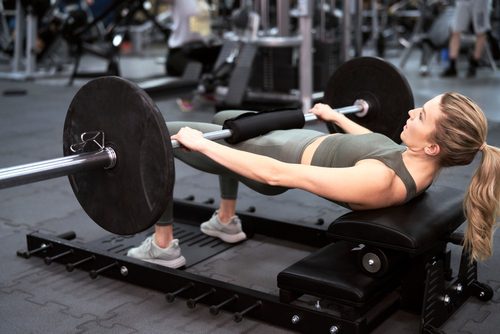
Here we go with another lower-body exercise. This is the last one, though. I promise
The hip thrust is an effective exercise for rowers because it helps to build power and explosiveness in the legs and glutes, which is essential for generating force during the always-important drive phase of the rowing stroke.
This exercise can be performed be done with a barbell and a weight, or you can use the hip thrust machine, which is becoming more and more common in commercial gyms.
Muscles used:
- Glute muscles
- Hamstrings
How to Perform the Hip Thrust:
* This is how you perform the exercise without a hip thrust machine
- Sit on the floor with your back against a bench or stability ball and your feet flat on the floor.
- Place a barbell or other weight on your hips, with the weight resting on your pelvic bone. Be sure to place a pad between your pelvis and the bar or you will be in pain,
- Begin the exercise by driving your hips upward, lifting the weight off the floor. Keep your core muscles tight and your back straight throughout the movement.
- Extend your hips as high as you can, squeezing your glutes at the top of the movement.
- Slowly lower the weight back to the starting position, keeping control of the movement throughout.
- Repeat for the desired number of reps, usually 8-12 reps, 3-4 sets
#5 Seated Cable Row
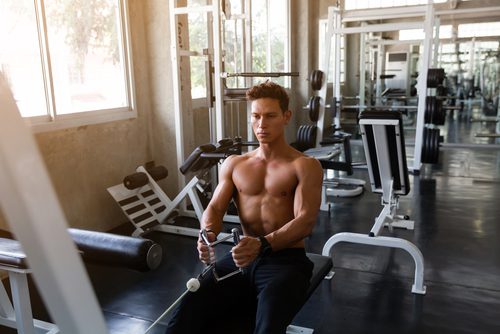
We have finally reached some upper body exercises. The seated cable row is a no-brainer selection.
This exercise literally mimics the rowing movement for the upper body.
This exercise works the lats, traps and rhomboids, which are the muscles rowers use during the stroke, and they also help to maintain posture and stabilize the shoulder when rowing.
If you want a more powerful rowing stroke, the seated cable row is another go-to exercise.
Muscles worked:
- Latissimus dorsi
- Rhomboids
- Trapezius
- Spinea erectors
- Biceps
How to Perform the Seated Cable Row:
- Select the weight that you would like to use.
- Sit on the bench or seat with your feet on the footplate and your knees slightly bent.
- Grasp the handle or attachment (such as a V-bar) with both hands, making sure that your hands are shoulder-width apart.
- Begin the exercise by pulling the handle or attachment towards your chest, keeping your back straight and your shoulders back.
- As you pull, engage your upper back muscles and squeeze your shoulder blades together.
- Slowly release the weight back to the starting position, making sure to keep control of the movement throughout.
- Repeat for the desired number of reps, usually 8-12 reps, 3-4 sets
#6 Bent Over Row
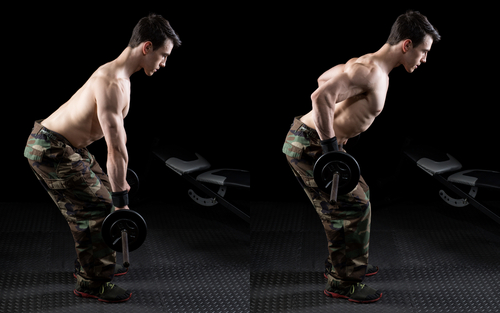
The bent-over row is another great exercise that targets the back muscles you use when pulling the oar.
Much like the seated cable row, this works the lats and traps and helps with shoulder stabilization.
On top of that is exercise also works the lower back, which is also important to rowers as well.
It’s important to keep in mind that form is crucial when performing the bent-over row exercise, so be sure to maintain a neutral spine, keeping the core muscles tight, and keep the weight in control throughout the movement.
I would also start with a lighter weight with this exercise. It can be a bit uncomfortable when you first start doing it,
Muscles worked:
- Latissimus dorsi
- Rhomboids
- Trapezius
- Spinea erectors
- Biceps
- Core
- Hamstrings
How to Perform the Bent-Over Row
- Stand with your feet shoulder-width apart and a barbell or dumbbells in your hands.
- Hinge at the hips to bend forward until your back is nearly parallel to the ground. Keep your back straight, core engaged and your knees slightly bent.
- Begin the exercise by pulling the weight towards your chest, keeping your elbows close to your body.
- As you pull, engage your back muscles and squeeze your shoulder blades together.
- Slowly release the weight back to the starting position, making sure to keep control of the movement throughout.
- Repeat for the desired number of reps, usually 8-12 reps, 3-4 sets.
#7 Upright Rows
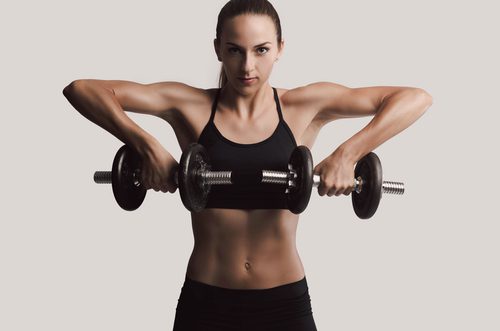
The upright row is another solid choice for an exercise to take your rowing to the next level.
Upright rows work the shoulder, traps, and biceps, all of which are used when rowing, and it mimics the upward pull of the oars during the rowing stroke.
You can perform upright rows with dumbbells or a barbell. Dumbbells are usually more comfortable on the joints.
Muscles used:
- Deltoids
- Trapezius
- Biceps
- Rhomboids
How to Perform the Upright Row:
- Stand with your feet shoulder-width apart and hold a barbell or dumbbells in front of your thighs, with your palms facing your body.
- Keep your back straight and your core tight as you lift the weight up towards your shoulders.
- As you lift the weight, keep your elbows pointing out to the sides and your wrists straight.
- When the weight reaches your shoulders, pause for a moment, then slowly lower it back down to the starting position.
- Repeat the movement for the desired number of reps.
#7 Dead Bugs
The dead bug is one of the most underrated core exercises out there for fitness types and athletes in general.
This is a great exercise for your abdominal muscles, specifically the rectus abdominis, transverse abdominis and obliques, which are essential for maintaining proper technique and power during the rowing stroke. Core strength also helps with stability when you are in a less stable boat like a 1 or 2-man boat. Tipping over into the water isn’t fun, especially when the water is cold and the cleanliness of the water is in question.
Muscle worked:
- Rectus abdominis.
- Internal and external obliques
- Transverse abdominis.
- Erector spinae
- Pelvic floor
How to Perform Dead Bugs
- Lie on your back with your knees bent and feet flat on the floor. Your lower back should be pressed into the floor.
- Place your hands behind your head, keeping your elbows close to your body.
- Slowly lower your right arm behind your head and extend your left leg out straight. As you do this, exhale and contract your abs to keep your lower back pressed into the floor.
- Return to the starting position and repeat the movement with your left arm and right leg.
- Continue to alternate sides for the desired number of repetitions.
#8 Planks
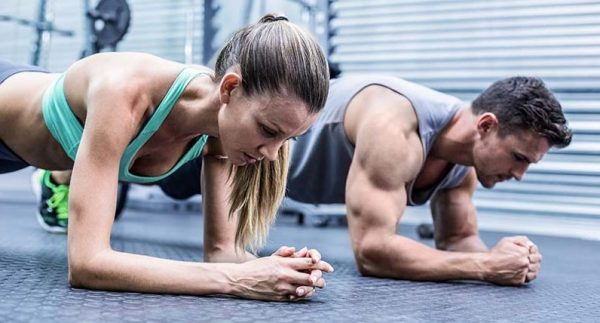
Up next, we have everyone’s favorite exercise, the plank! Try to contain your excitement.
The plank works your core, lower back, and shoulder, all of which are crucial for rowing.
While the plank can be one of the more boring exercises on the planet. you can try and spice it up a bit by timing yourself and trying to beat your personal best or add in different plank variations like the side and raising an arm and the opposite leg at the same time. Talk about excitement!
Muscles worked:
- Transversus abdominis.
- Rectus abdominis.
- Internal oblique.
- External oblique muscles
How to Perform a Plank:
- Start by getting into a push-up position with your hands placed directly under your shoulders and your arms straight.
- Bring your body into a straight line, from your head to your heels, with your core engaged. Your body should be in a neutral position, with your head, spine, and hips aligned.
- Keep your gaze focused on the floor, about a foot in front of your hands, to keep your neck in a neutral position.
- Hold this position for as long as you can while maintaining proper form. Keep your core engaged and avoid letting your hips sag or your back arch.
- To increase the difficulty, you can try doing the plank on one leg or with your arms in different positions, such as on your forearms or with your hands together.
- As you get stronger, you can try adding variations to the plank, such as leg raises, opposite arm and leg raises, or a side twist.
It’s important to perform the exercise with proper form and not to hold your breath while holding the plank.
It’s also good to start with shorter holds, like 15-30 seconds and gradually increase the hold time as you progress.
#10 Supermans
The Superman exercise is a great exercise for rowing athletes because it targets the muscles used in the rowing motion, specifically the lower back and core.
But it’s not only for rowing athletes. It is also an excellent exercise for anyone looking to strengthen their lower back and core. Additionally, the exercise can also help to improve posture and balance.
It’s important to keep your head and neck in line with your spine and to keep your arms and legs straight throughout the exercise.
Muscles worked:
- Spinal Erectors (lower back)
- Gluteals
- Hamstrings
- Upper Traps (hands extended)
How To Perform The Superman Exercise:
- Start by lying face down on a mat with your arms and legs extended
- Slowly raise your arms, legs, and chest off the mat at the same time
- Keep your head and neck in line with your spine and your arms and legs straight
- Hold the position for a few seconds, do you feel like a superhero? Slowly lower back down to the starting position
- Repeat the exercise for the desired number of repetitions
#11 Shoulder Press
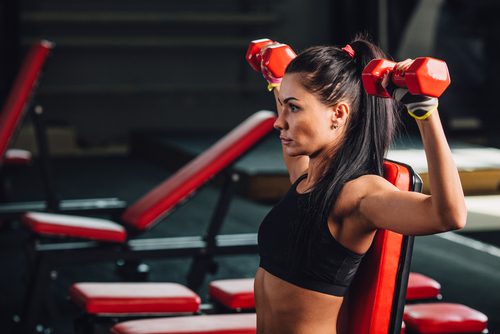
Rounding out our list of the best exercises for rowing athletes, we have the shoulder press.
Lowering that oar in and out of the water can get tiring for the shoulders so they better be strong.
To build strong shoulders, mix in shoulder presses. You can use a barbell or dumbbells. Whichever you prefer is fine. I’m a dumbbell guy myself (pun intended)
Muscles worked:
- Deltoids
- Traps
- Triceps
- Core
How to Perform the Shoulder Press
- Start by sitting or standing with a barbell or dumbbells at shoulder level, with your palms facing forward.
- Slowly press the barbell or dumbbells overhead, straightening your arms.
- Keep your core muscles tight as a drum and your back straight throughout the exercise.
- Hold the position for a moment at the top of the movement, then slowly lower the barbell or dumbbells back to the starting position.
- Repeat the exercise for the desired number of repetitions.
Rowing Athlete Workout
Now that we have given you the best strength exercises for rowing athletes, let’s put it all together in a workout program that will have you smashing your old PRs in no time.
Monday
Warm-up: 5-10 minutes of light cardio (jogging, cycling, etc.)
- Leg press – 3 sets of 8-12 reps
- Bulgarian Split Squats – 3 x 8-12
- Romanian Deadlift – 3 x 8-12
- Deadbugs – 3 x 12-15
Tuesday
Warm-up: 5-10 minutes of light cardio (jogging, cycling, etc.)
- Seated cable rows – 3 x 8-12
- Bent over rows – 3 x 8-12
- Shoulder Press – 3 x 8-12
- Supermans – 3 x 12-15
- Plank – 3 sets for max time
Wednesday
- Cardio: 30-40 minutes of steady-state cardio (preferably the rowing machine)
Thursday
Warm-up: 5-10 minutes of light cardio (jogging, cycling, etc.)
- Goblet Squats – 3 x 8-12
- Bulgarian Split Squat – 3 x 8-12
- Hip Thrusts – 3 x 8-12
- Deadbugs – 3 x 12-15
Friday
Warm-up: 5-10 minutes of light cardio (jogging, cycling, etc.)
- Seated Cable Row – 3 x 8-12
- Single arm dumbbell rows – 3 x 8-12
- Upright rows – 3 x 8-12
- Landmine press – 3 x 10-12
- Supermans – 3 x 12-15
- Plank – 3 sets for max time
This strength training program is designed to work on the legs, back, and shoulders, which are the key muscle groups used in rowing. The cardio sessions will help improve cardiovascular fitness and endurance.
As you become stronger, be sure to increase the weight to challenge yourself, that’s how you take it to the next level.
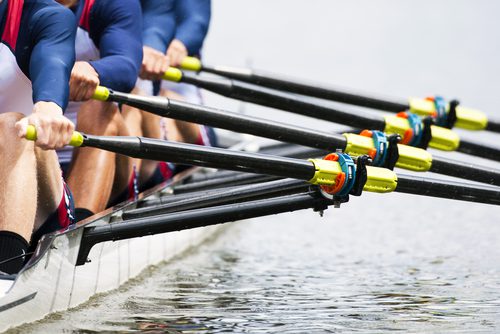
Related: CrossFit Rowing Workouts for Better Endurance
Related: The 10 Best Rowing Machines on the Market
Erg Workouts For Superior Performance
We have gone over the right weightlifting exercises that will have you crushing it on the water. It takes more than that, though. Otherwise, every meathead weightlifter would be a great rower, which we know isn’t the case.
To really dominate the water and blow your teammate’s minds, you are going to have to put in your time on the erg (rowing machine) as well.
Below we have a rowing workout program that will help build your overall rowing performance.
Monday
Warm-up: 5-10 minutes of light cardio (jogging, cycling, etc.)
- 20 minutes of steady-state rowing at moderate intensity (around 70-80% of your maximum heart rate)
- 10x 1-minute intervals at a high intensity (90-95% of your maximum heart rate) with 1-minute rest in between
- 10-minute cool-down at moderate intensity
Tuesday
- Cardio: 30-40 minutes of steady-state cardio (running, cycling, etc.)
Wednesday
Warm-up: 5-10 minutes
- 20 minutes of steady-state rowing at moderate intensity
- 12 x 30-second intervals at high intensity with 30 seconds rest in between
- 10-minute cool-down at moderate intensity
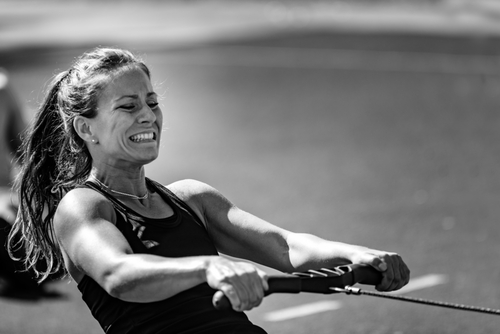
Thursday
- Cardio: 30-40 minutes of steady-state cardio (running, cycling, etc.)
Friday:
Warm-up
- 30 minutes of steady-state rowing at moderate intensity
- 15x 20-second intervals at high intensity with 20 seconds rest in between
- 10-minute cool-down at moderate intensity
Saturday:
- Cardio: 30-40 minutes of steady-state cardio (running, cycling, etc.)
Sunday: Rest day
This workout is designed to build your cardiovascular fitness and endurance through steady-state and interval rowing sessions. The high-intensity intervals will help to increase your power and speed on the rowing machine.
As you get better, you can increase your times to increase your endurance even more.
Obviously, you can combine the lifting and rowing programs together however you see fit. Make sure to get at least one rest day per week though, preferably two.
It would also be wise to consult a coach or trainer for your specific needs. These workouts are more general. Also, be sure to use proper form when lifting weights or rowing. Don’t let your ego make you look like a fool, use a weight you can handle.
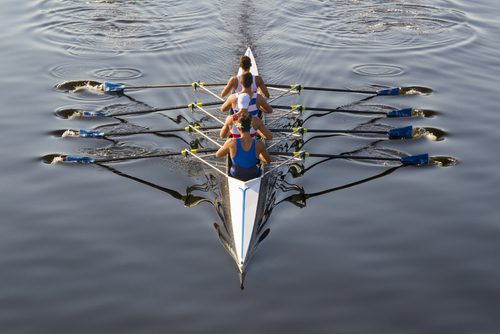
Related: Concept 2 Rowerg Model Review: Best Rowing Maching?
Final Word
There you have it, the best exercises for rowing athletes and workouts, as well as erg workouts for better cardio and endurance. Combine the lifting and the erg workouts and you will smash your old PRs into oblivion. Just remember to stay consistent and be patient. The result won’t come overnight, but they will come. Give it a month, and you will see changes. Give it six months, and you will be a lean, mean rowing machine.

Ryan is a former college wrestler and lifelong fitness fanatic. He has run half marathons, done mud runs, placed in body transformation contests, coached wrestling, and now coaches girls’ soccer. Not to mention he has also tried literally hundreds of supplements over the years and has a vast and thorough supplement knowledge. He has written for Muscle & Strength, Testosterone Junkie, The Sport Review and other publications. He is also the editor-in-chief of this website and has over 25 years of experience in the fitness industry. Feel free to connect with him on his LinkedIn page below.

